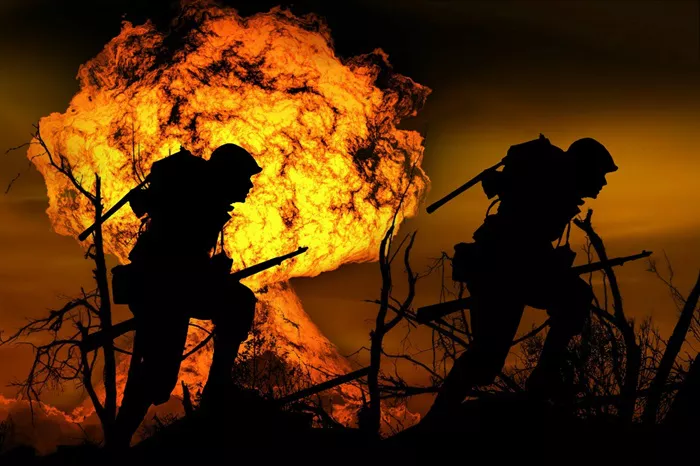The question of who has the power to declare war is fundamental to understanding the balance of power in government. This issue involves complex interplay between various branches of government and has significant implications for national and international politics. This article explores the legal and constitutional aspects of declaring war, focusing on the United States as a primary example while also considering international perspectives.
Constitutional Basis
The U.S. Constitution
In the United States, the power to declare war is explicitly vested in Congress by the Constitution. Article I, Section 8 of the U.S. Constitution states that Congress has the power “To declare War, grant Letters of Marque and Reprisal, and make Rules concerning Captures on Land and Water.”
Executive Power
While Congress holds the power to declare war, the President, as Commander-in-Chief, has significant authority over the conduct of military operations. Article II, Section 2 of the U.S. Constitution designates the President as the Commander-in-Chief of the armed forces, giving them the power to direct military actions once a conflict has been initiated.
Historical Context
Historically, the Founding Fathers intended to place the power to declare war in the hands of the legislature to prevent unilateral decisions by the executive branch. This separation of powers was designed to ensure that any decision to go to war would require broad consensus and deliberation.
The Role of Congress
Formal Declarations of War
Congress has formally declared war 11 times in U.S. history, the last being during World War II. These declarations were clear, formal acknowledgments of a state of war between the United States and other nations.
Authorizations for Use of Military Force (AUMF)
In modern times, Congress has often used Authorizations for Use of Military Force (AUMF) instead of formal declarations of war. These authorizations provide the President with the legal framework to conduct military operations without a formal declaration of war. Notable examples include the 2001 AUMF against those responsible for the September 11 attacks and the 2002 AUMF against Iraq.
The President’s War Powers
Military Engagements Without Formal Declaration
The President’s role as Commander-in-Chief allows for military engagements without a formal declaration of war. Presidents have initiated numerous military actions under this authority, often justifying them on grounds of national security or humanitarian intervention.
The War Powers Resolution
In response to concerns over presidential overreach, Congress passed the War Powers Resolution in 1973. This resolution aims to check the President’s power by requiring notification to Congress within 48 hours of deploying troops and limiting military engagements to 60 days (with a 30-day withdrawal period) unless Congress grants an extension or declares war.
See also: WHAT IS THE ORDER OF SUCCESSION TO THE PRESIDENCY?
Judicial Interpretation
Supreme Court Cases
The judiciary has occasionally weighed in on war powers issues. Key Supreme Court cases, such as Youngstown Sheet & Tube Co. v. Sawyer (1952) and Hamdan v. Rumsfeld (2006), have addressed the limits of executive power in the context of war and military operations.
Judicial Deference
Generally, the courts have shown deference to the executive branch on matters of war and national security. This deference reflects the complexities and exigencies of military decisions, which are often considered beyond the judiciary’s purview.
International Perspectives
United Nations Charter
On the international stage, the United Nations Charter plays a crucial role in the declaration of war and the use of force. The Charter prohibits member states from using force against the territorial integrity or political independence of any state, except in cases of self-defense or when authorized by the UN Security Council.
Comparative Constitutional Frameworks
Different countries have varying constitutional frameworks regarding the power to declare war. In the United Kingdom, for example, the Prime Minister holds significant authority to deploy troops, though parliamentary approval is often sought. In contrast, many parliamentary democracies require legislative approval for declarations of war.
Case Studies
The Gulf War
The 1991 Gulf War is a notable example of congressional authorization of military force. President George H.W. Bush sought and obtained congressional approval through a joint resolution before initiating military operations against Iraq.
The War on Terror
The post-9/11 War on Terror illustrates the use of AUMFs in modern warfare. The 2001 AUMF has been used to justify various military actions against terrorist organizations and affiliated groups, highlighting the evolving nature of war powers.
Implications and Debates
Checks and Balances
The balance of war powers between Congress and the President reflects the broader system of checks and balances in the U.S. government. This balance aims to prevent unilateral decisions that could lead to prolonged conflicts without legislative oversight.
Modern Challenges
The nature of warfare has changed significantly, with asymmetrical conflicts, cyber warfare, and non-state actors presenting new challenges. These developments complicate the traditional framework of declaring war and necessitate ongoing debates about the appropriate distribution of war powers.
Public Opinion and Accountability
Public opinion plays a crucial role in decisions to go to war. Elected officials, both in Congress and the executive branch, must consider the views of their constituents when making decisions about military engagements. This accountability is a key aspect of democratic governance.
Conclusion
The power to declare war is a complex and multifaceted issue that involves legal, constitutional, and practical considerations. In the United States, this power is primarily vested in Congress, though the President holds significant authority as Commander-in-Chief. Internationally, various frameworks govern the use of force, reflecting the diverse political and legal systems around the world. Understanding who has the power to declare war requires a nuanced appreciation of these factors and their implications for governance and international relations.
Related topics:
WHO IS ANDREA FROST ON DESIGNATED SURVIVOR? [REVEALED]
TOP 10 CHARACTERS FROM DESIGNATED SURVIVOR
BEST 5 TV SHOWS LIKE DESIGNATED SURVIVOR

